- dentalxpertz@gmail.com
-
First Floor, NWA Building,
Near Lakshmi College,
Amman Kovil Road, Pin - 683513
North Paravur, Cochin
+91 7025-606000
Dental Care Service is expensive in all parts of the world and it is unaffordable by average citizens. Insurance reimbursement is not availablefor Dental treatment in almost all Countries.Dental treatment in India cost less when compared to the Countries such as USA , Europe or the Arab countries
Dental tourism (commonly known as dental holidays in Europe) is a subset of the sector known as medical tourism. It involves individuals seeking dental care outside of their local healthcare systems and may be accompanied by a vacation. Dental tourism is growing worldwide:[1] as the world becomes ever more interdependent and competitive, technique, material, and technological advances spread rapidly, enabling providers in "developing countries" to provide dental care at significant cost savings when compared with their peers in the developed world

While on Dental treatment the traveler can see scenic beauty of Kerala. Since, Dental treatment does not require hospitalization or long recovery time tourists can plan and use the inter appointment and post treatment leisure time to visit any location in and around Kerala
Kerala is one of the prime tourist locations in India. Kerala is also popularly known as God's Own Country. The nature here is especially beautiful and the entire state is one big tourist spot.Our clinic offers dental treatment with dental tourism packages at the most affordable rates. why not take advantage of dental tourism in Kerala and it's beautiful beaches? National Geographic did name Kerala one of the world's 13 paradises after all.
The backwaters in Kerala are the most enchanting features of Kerala. Backwaters refer to the large inland lakes of Kerala, consisting of an exquisite network of lakes, canals, estuaries and curious water formations. The backwaters of Kerala stretch over 1900kms, providing, drinking water and irrigating paddy fields.
These waterways of Kerala have played a main role in the economy of the state. Rice boats and even small ships used to ply in these waters, carrying coconut, rice and spices to various trading centers of Kerala. Even today, these waterways link remote villages and islands with the main land. It is an incredibly different experience to cruise in the backwaters in country boats, absorbing the beauty of the villages.
These waterways of Kerala have played a main role in the economy of the state. Rice boats and even small ships used to ply in these waters, carrying coconut, rice and spices to various trading centers of Kerala. Even today, these waterways link remote villages and islands with the main land. It is an incredibly different experience to cruise in the backwaters in country boats, absorbing the beauty of the villages.
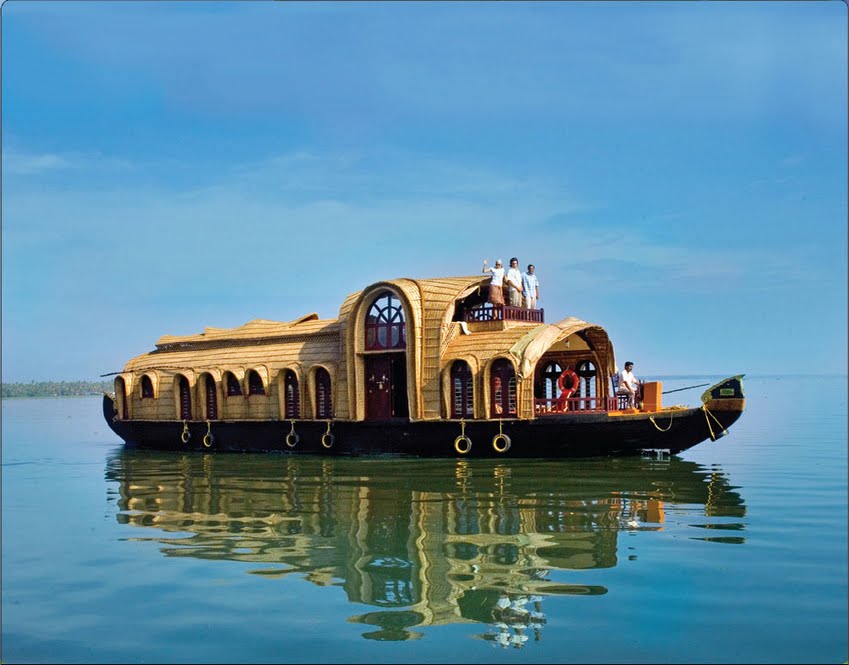
While floating down the waterways your boatman can take you into one of the thatched country toddy shops for a glass of the fermented water which is served along with a delicious array of fresh fish and tapioca - a delicacy not to be missed. Exploring the backwaters is a thrilling experience of drifting under little hump-backed bridges, serenaded by long avenues of palms past temples and churches.
When you decide on a backwater trip chose to ride in a houseboat. They are known as 'Kettuvallam' and are floating houses made of coir. They are very sturdy and safe. A day or two in a houseboat floating down the backwaters pampered by a small crew consisting of a captain, personal chef, and second mate is just what the doctor ordered for a perfect Indian holiday experience.
Kumarakom is a popular tourism destination located near the city of Kottayam (16 kilometres) in Kerala, India, famous for its backwater tourism. It is set in the backdrop of the Vembanad Lake, the largest freshwater lake in the state of Kerala.
Beaches in the Indian state of Kerala are spread along the 550-km Arabian Sea coastline. Kerala is an Indian state occupying the south-west corner of the subcontinent. The topography of the coastline is distinctive and changes abruptly as one proceeds from north to south. The nearest beaches from our clinic Dental Xpertz are Cherai Beach and Fort Cochin. One feature is common all through – the coconut tree in large numbers. Dense groves of coconut trees line the coast and extend to the interiors.

Munnar is a town and hill station located in the Idukki district of the southwestern Indian state of Kerala. Munnar is situated at around 1,600 metres (5,200 ft) above sea level in the Western Ghats range of mountains.
The name Munnar is believed to mean "three rivers referring to its location at the confluence of the Mudhirapuzha, Nallathanni and Kundaly rivers. Munnar town is situated on the Kannan Devan Hills village in Devikulam taluk and is the largest panchayat in the Idukki district covering an area of nearly 557 square kilometres (215 sq mi) The nearest major railway stations are at Ernakulam and Aluva (approximately 140 kilometres (87 mi) by road). The Nearest Functioning Railway station is atUdumalaipettai according to Google maps The nearest airport is Cochin International Airport, which is 105 kilometres (65 mi) away.
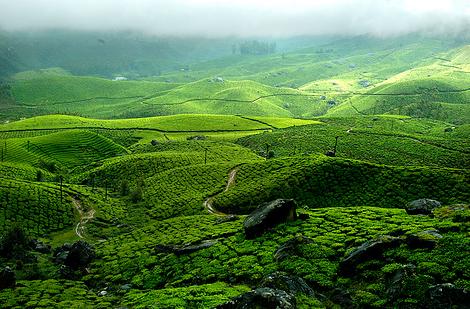
Uniques views and point of interests are the so-called Chinese fishing nets (Cheenavala) and the fishermen working there: commonly known as "Chinese fishing nets" they are shore operated lift nets, each measering about 10 metres (33 ft) in height, sustaining a cantilever with an outstretched net of 20 metres (66 ft) or more, suspended over the sea and large stones suspended from ropes as counterweights at the other end. Each installation is operated by a team of up to six fishermen
Other points of interests include the jetty towards the Vembanad Lake respectively to the Kerala backwaters. Colonial-style bungalows can be seen along the shoreline, as well as the Vasco da Gama square, the remains of Fort Emmanuel along the granite walkway and lots of small stalls, which make traditional cuisines using freshly caught fish

Hill Palace was the abode of erstwhile Maharaja of Kochi and was coverted to a Museum in 1986. The museum complex exhibits crown and ornaments of erst while Cochin royal family, paintings, sculptures in stone and marble, weapons, inscriptions, coins etc and has an archaeological museum, a heritage museum, a deer park, a pre-historic park and a children’s park
The weapon gallery & horse cart gallery are really amazing.The Hill Palace Museum is opened to public everyday except Mondays and national /state holidays from 10am to 12.30 noon and 2.00 pm to 5.00 pm and this is a must visit for tourists who are interested in culture and history of Kerala

kottakavu Church situated in the heart of Paravur town in Kerala is a significant place of religious importance as one of the seven churches or Christian settlements established by St. Thomas, one of the apostles of Christ. It is believed that the Persian Cross, which is preserved in the chapel in front of the church, might have been engraved in rock in 880 AD. A wooden cross which the saint had planted was kept in the church till the 18th century. But during the siege of Tipu Sultan, various churches were demolished, and this cross too was destroyed. The church ransacked at that time was the third one built after the saint's time. The church of 1308 was rebuilt and blessed on 15th August 2002.
The old church, the elephantine wall on the adjacent western side and the pilgrim pond where the Apostle baptized the devotees are all still preserved well. It is known that about 2 acres of land were provisionally allocated by the church for the construction of the Paravur market. It was the Cross that stood in this place from age old days that was converted into the market chapel.
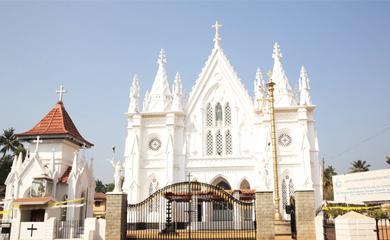
Kurumbakavu Bhagavathi Temple, popularly known as Kodungallur Bhagavathy Temple is located about 1.5 km southeast of the Kodungallur bus stand. It is assumed that the placement of the idol of Kannaki was done about 1800 years ago by Cheran Chenkuttuvan of the Chera dynasty. The presiding deity of the temple is Bhadrakali (Goddess Kali). The shrine is crowded on Tuesdays, Fridays and Saturdays and is busy during the Sabarimala season as well.
The most famous festival of Kurumbakavu temple is the Bharani festival or Kavutheendal, which starts on the Bharani asterism, as per the Malayalam month of Meenam (March-April). The animal sacrifices that once were part of the festival in this temple are now banned, but the pilgrims still drink liquor and sing lewd songs, all the way from their villages to the shrine, as part of the ceremony. At the end of the festival, the temple closes and opens on the seventh day, after the Aswathi asterism. Another important festival at this temple is the Navarathri
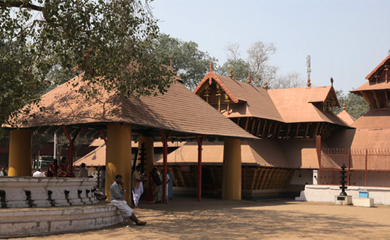
The Cheraman Juma Mosque is a mosque in Methala, Kodungallur Taluk, Thrissur District in the Indian state of Kerala.[1][2][3] Built in 629 AD, it is the first mosque in India. It was built by Malik Deenar, an Arab propagator of Islam. It is believed that this mosque was first renovated and reconstructed in the 11th century AD. Many non-Muslims conduct initiation ceremonies to the world of letters of their children here.
Since ancient times, trade relations between Arabia and India were active. Even before Islam had been established in Arabia, Arab traders visited the Malabar region, which was a major link between the ports of India and Southeast Asia. With the advent of Islam, the Arab merchants became carriers of the new religion and they propagated it wherever they went One of the myths around the mosque is that Cheraman Perumal, the Chera king, went to Arabia, embraced Islam and changed his name to Tajuddin. He spent some time there, and died while returning in Dhufar, Oman.

ottappuram Fort, built by the Portuguese in 1523 was referred to popularly as Cranganore Fort and is now known as Kodungallur Fort. It was captured and destroyed by the Dutch in 1663. The Fort had a strategic position, on the mouth of the river Periyar before it joins the Arabian Sea, which gave it the advantage of controlling the ships and boats that passed to and from the interior of Malabar. A church and many traditional houses in the nearby area, built by the Europeans still remain today.
When the interest of the rulers of Mysore turned towards Malabar, Haider Ali negotiated with the Dutch for the purchase of the Kottappuram Fort and the one at Pallippuram. During Tipu Sultan's possession of the Malabar Coast, the Travancore rulers felt it was imperative for them to possess these forts, to safeguard their kingdom against invasion by the Mysore rulers. So, the then Travancore King, Ramavarma Dharmaraja (1758-1798), purchased these two forts on 31 July 1789. The agreement was executed in 1909, by Raja Kesava Dasa, the Dewan of Travancore and John Gerard Van Angelbeck, the Dutch Governor. Later, finding it in a ruined state, the Department of Archaeology of Travancore erected a memorial pillar inside the Fort and decided to preserve it as a public property. Kottappuram fort is located about 4 kilometers from Kottappuram Junction on the Kodungallur-Moothakunnam Road.
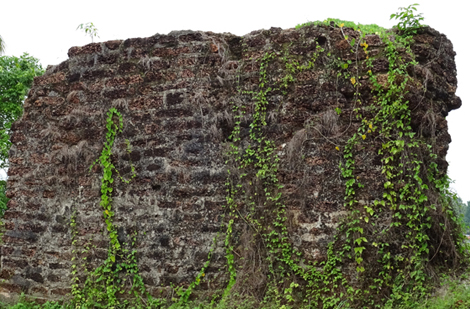
Thiruvanchikulam Mahadeva Temple boasts of a history of more than 2000 years. The temple, located in Kottappuram, is remarkable for its number of representations of Lord Shiva. There is a Namaskara Mandapam, with 16 pillars in front of the Sreekovil is one of the major attractions of this temple. The Utsavam (annual festival) is held in the Malayalam month of Kumbham (Feb-Mar), during which the festival of Shivratri is celebrated in a grand manner. Aanayottam (Elephant race) is conducted as part of the festival attracts lot of devotees to the temple.
Devotees attend the Palliyara pujas, held just before the temple closes in the evening, on full moon nights, to pray for happy married life and to be blessed with children. The western entrance of the temple is on the Kodungallur- Ernakulam highway. The temple is located about 6 km from Kodungallur..
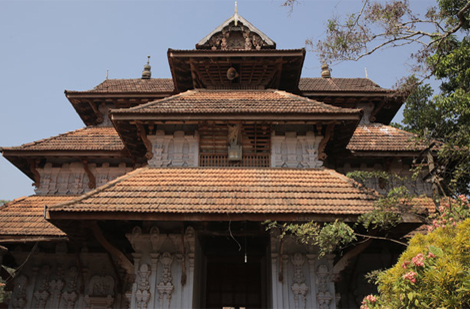
The Chinese fishing nets which symbolises Kochi can be seen only in Fort Kochi which may be the only place in the world where the Chinese fishing nets are unique outside China for which the credit goes to the traders from the court of Chinese emperor Kubla Khan. Presently, there are 11 Chinese fishing nets dotting the Fort Kochi shoreline while it was 20 about ten years ago.
St Francis Church which is one of the oldest built by Europeans in India and another landmark in this area is Vasco House where Vasco Da Gama is believed to have lived. Visitors can also enjoy walking along Fort Kochi Beach which may be the only beach in the state which has the presence of the Chinese fishing nets and which is also famous for Cochin carnival that is conducted on New Years eve..

Mattancherry is another fascinating area in Kochi. The name mattancherry originated from the house name “Ancherry Mattam”, a Brahmin house which was pronounced by foreign traders as Matt-Ancherry. Mattancherry is tourist spot in Kochi where Portuguese influence can be seen and in particular the Dutch Palace..
Jew Town is another tourist attraction of Mattancherry with the synagogue dating from 1568 which is India’s oldest functioning synagogue along with other tourist spots like Mattancherry Palace Museum which hosts different weapons such as swords, spears etc , Mattacherry Pazhayannur Royal temple and Palliarakkavvu temple, Ram Mandir, Gowd Saraswat Brahmin temples etc. .

Bolghatty Island is a short boat ride away from mainland Kochi and has Bolghatty Palace which is one of the oldest existing Dutch palaces outside Holland .Bolghatty Palace is now converted into a hotel and there is even a small golf course , a swimming pool, 9-hole golf course, ayurvedic centre and daily Kathakali performances and is a popular resort to stay for Indian and overseas tourists.
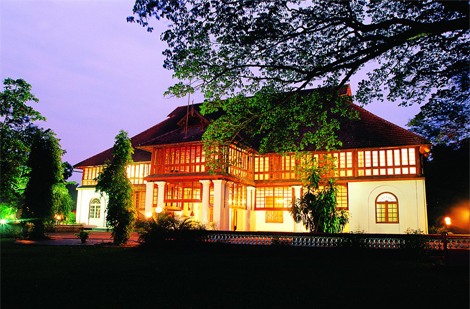
Kochi also has India’s largest shopping mall in Edappally – Lulu Shopping Mall owned and operated by EMKE Group. For a shopping experience in Kochi there are lots of markets but a visit to Lulu Mall is a treat with air conditioning and 300+ food outlets, stores and restaurants. There are both international brands as well as local specialties to see in this modern complex and there is also a premium five-star, 20-storey, 300 room hotel managed by JW Marriott Hotels is located adjacent to it, within the mall compound.
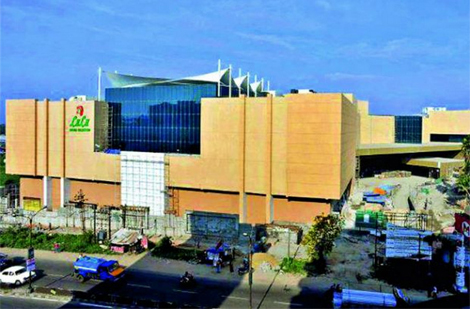
Gothuruthu was cattle grazing land, owned by Paliath Achan in olden times. This centre is famous for the art form "Chavittu Nadakam". Portraying Christian history, it is a blend of traditional Portuguese art form brought by Portuguese missionaries to this coastal area and local art forms. In this new hybrid art form, the performers stamp their feet hard into the wooden stage to make a loud noise, which gave the form its name: 'Chavittu Nadakam', literally 'stamping drama'. In a typical show, there would be 150-200 people on stage. Now the performers are down to 75 and the duration of a show is shortened to 2-3 hours. The Chavittu Nadakam performers now perform on Gothuruthu Island, where the Kerala Chavittu Nataka Academy has been established. Chavittu Nadakam is performed annually in January, at the church in Cheria Pallamthuruthu, in connection with St. Stephen's festival.
Gothuruthu is also popular for its boat race or Vallamkali, generally performed in September. Chundan Vallom or snake boat and Iruttukuthy Vallom participate in the annual boat race. Both the valloms are with the church under St. Sebastian Club. Gothuruthu Church, situated at the centre of the village attracts many devotees. A school, approximately 100 years old is close to the church. Gothuruthu is also famous for its Portuguese-inspired cuisine which includes over 100 varieties of sea-food recipes
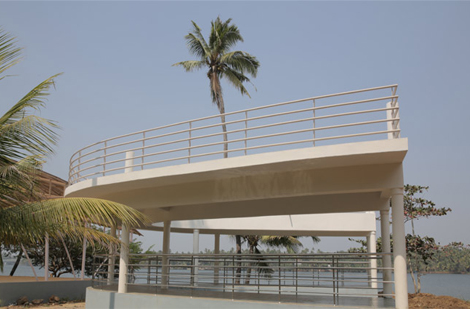
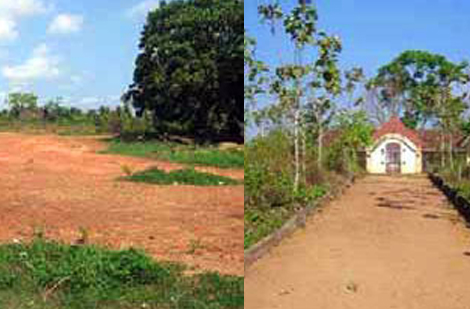
kottayil kovilakom got its name from its original location,inside a fort. The site around an old well was declared a protected monument by the Department of Archaeology of the erstwhile State of Cochin in 1936. A Vishnu Temple is located on top of the hill in the same compound .The Jewish cemetery of the Chendamagalam Jews is preserved in the valley of this hill. A mosque was also established on another side ,in the valley of the same hill. The Jewish Synagogue,Vypeekotta Seminary and Forane Church are in the neighbourhood of Kottayil Kovilakom ,which is on the bank of River Periyar.
